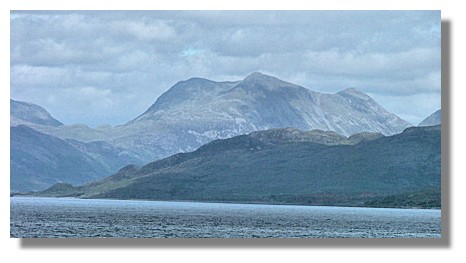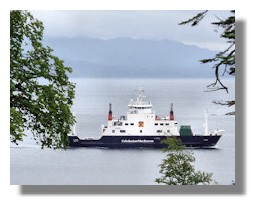Tam's Tales
- Over the Sea to Skye
Skye In Summer
It has been many a year since I last visited the Western Isles. We had a brilliant holiday in Mull then tempted Providence by returning the following summer and it poured for all of the fourteen days in high summer.
This year we were luckier with our weekend break in Skye, staying with friends in an eccentrically named cottage called 'Half seventeen.' There was some sunshine and even when the clouds got the upper hand it stopped short of the aforementioned downpours in Mull. And there is the rub.
Large parts of Scotland can be absolutely heavenly one day and then shrouded in thick mist the next. You never know, the weather can change from hour to hour. There are bonuses; sometimes the ever changing cloudscape is like a movie on a grand scale.
We were staying in the south of the island, so it made more sense to make the short ferry trip from Mallaig to Armadale, rather than drive north to use the bridge. The views from the ferry were an added bonus and by the time we landed in Skye and made the short journey to the Aird of Sleat, we were enchanted by the vast Hebridean skies and the panoramic views taking in the neighbouring islands of Rhum and Eigg and more besides.
The Museum of the Isles
A short visit does not really do the island justice. There is a lot to explore and I would like to return to see more of the north of the island, Dunvegan Castle and Talisker distillery. However we did have time to visit the Museum of the Isles which is run by the Clan Donald Lands Trust, and has been open to the public since 2002.
The collection of artefacts tells its own story. The pistols and swords are testament to the fighting abilities of the Highlanders and the violent disputes that rent Scotland down the years. Two notable events were the Massacre of Glencoe and the Jacobite Rebellion that was crushed in 1745 - both occasioned heavy repercussions.
I was particularly impressed by the stories that the museum's collection told, notably its unsentimental description of the clan system. The word 'clan' derives from the Gaelic word meaning children and the idea of an extended family is an appealing one. However the museum demonstrates how the traditional clan system, with the chief as a caring landlord, was put under strain through a number of circumstances, one of which was the fondness for the high life.
The lure of Edinburgh, London and the wonders of Paris, Florence and other destinations on the Grand Tour of Europe which were popular with the monied Úlite helped weaken the link between the clan chiefs and his followers, but there were a range of other factors that weakened the bonds. The Museum makes the point that the failure of the Jacobite rebellion in 1745 was at the latter end of the disintegration of the traditional role of the clan chief.
Not Everyone Likes the Bagpipes
The Museum has a wide range of exhibits covering many other aspects of Highland life, tradition and culture. I particularly liked the confident way in which refused to romanticise things. You can learn quite a lot about the bagpipes there, but the one quote which made me smile was from the poet Neil MacMhurich who likened the playing of John MacArthur, piper to the MacDonalds of Sleat, to the screeching of "a diseased heron."
As we left the museum, I was left pondering the fact that in many respects, the lives led by the Highlanders in time gone by will have resembled that of people in England and Wales. Many people will have scratched a living from the land or the sea and worked hard in adverse conditions. But the Scottish heritage is a particularly strong one. The clan system may have change fundamentally, but it lives on in a looser, less formal way as evidenced by the thousands of people who came from all corners of people who made their way to Edinburgh in 2009 for the Gathering of the Clans.
More Information
Here are some links to pages related to Skye from around the Web -
- Clan Donald - and Museum of the Isles
- Armadale Castle - It's history and a large graphic.
- Dunvegan Castle - From "Castles of Scotland".
- Tour of Skye - In Pictures.
- Isle of Skye - Official site.
- Isle of Skye - Virtual Tour
- Isle of Skye - Illustrated walking tours.
- Isle of Skye Flora - Flowering plants growing wild on Skye.
- Skye and Lochalsh - From VisitHighlands, the official tourism agency.
- Internet Guide to Skye - Full of links and information.
- Armadale on Google Maps - Zoom out and tour around yourself.
- And don't forget to look round also with Google Earth!
Tam O'Ranter
17 July 2010Return to Tam O'Ranter Index





